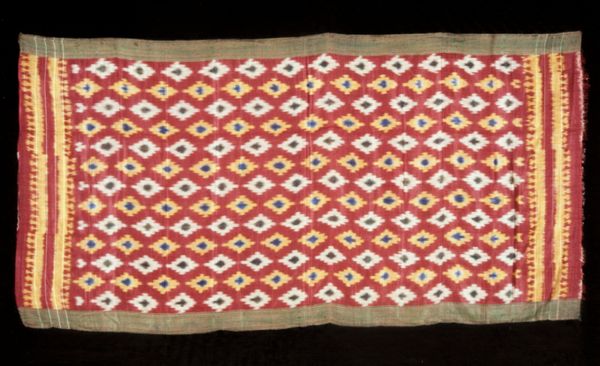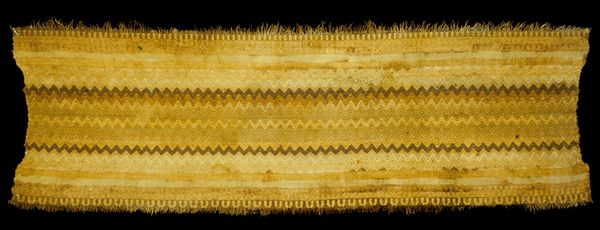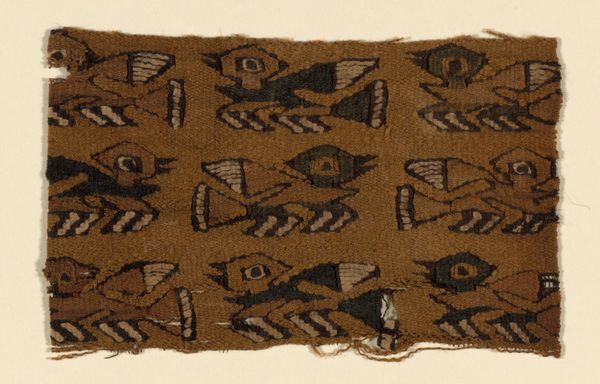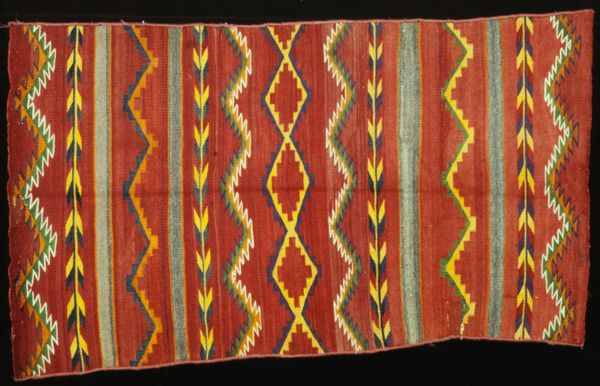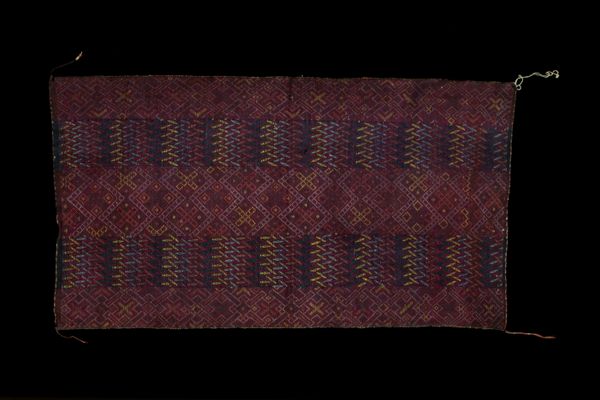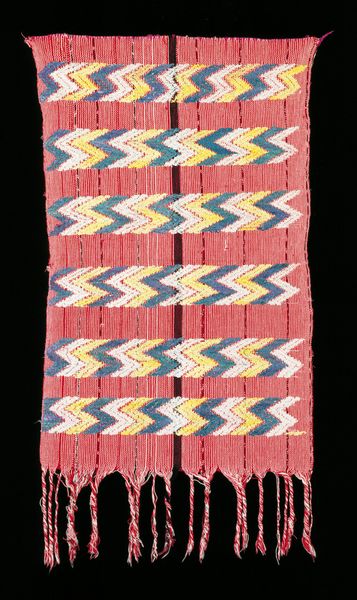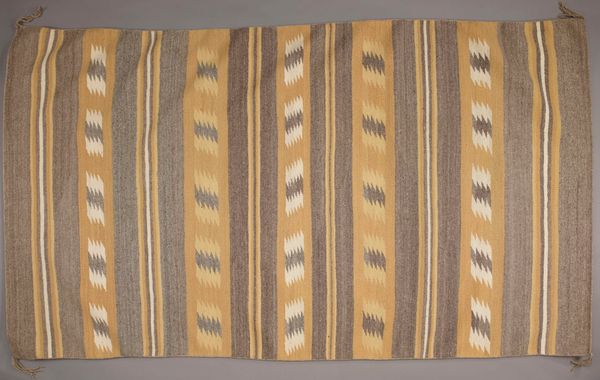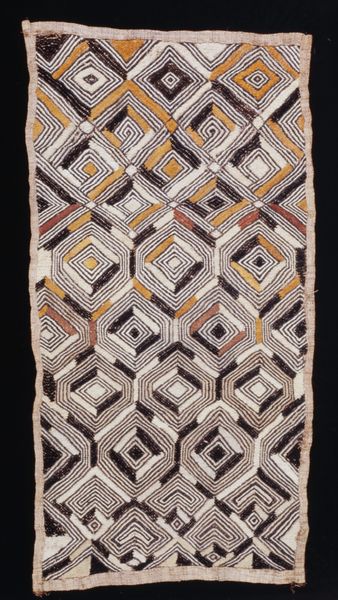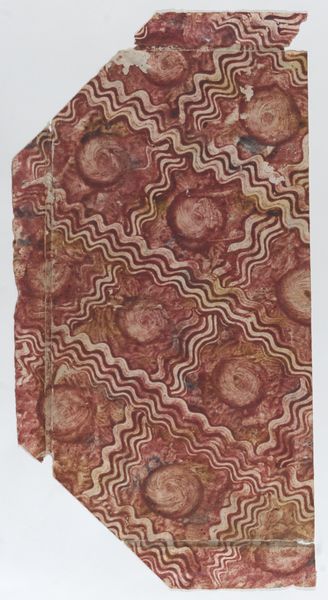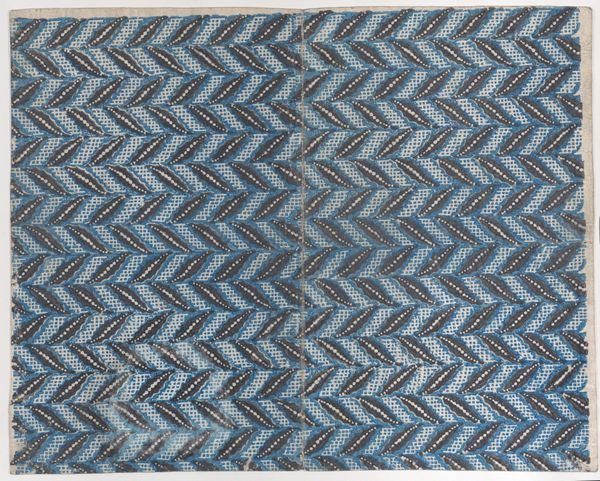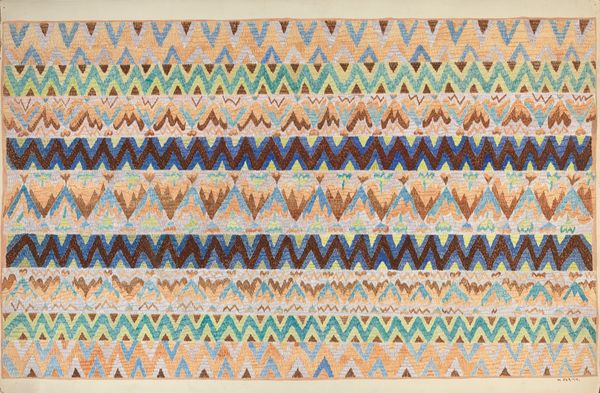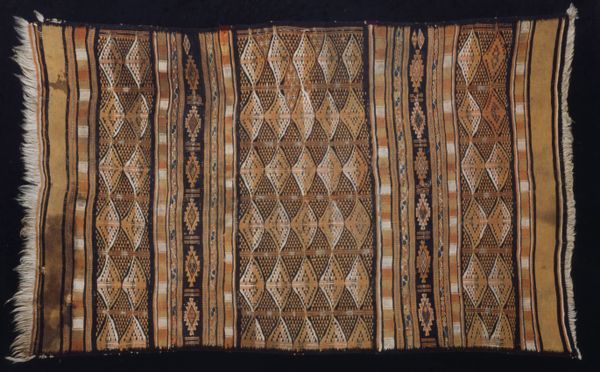
silk, textile
#
silk
#
pattern
#
asian-art
#
textile
#
geometric pattern
#
geometric
Dimensions: 594 15/16 x 5 9/16 in. (1511.14 x 14.13 cm)
Copyright: Public Domain
Curator: Looking at this image, I immediately see the movement in it, almost like sound waves visualized. There's something deeply appealing about that rhythm, a calming energy. Editor: Indeed. What we're observing here is a man's turban, or "Pagri," crafted around 1850. It is currently held in the collection of the Minneapolis Institute of Art. What is striking to me is that this piece employs silk. Think about what the cultivation and processing of silk meant for economies of that time. This piece isn't just fabric; it's labor and trade solidified. Curator: Right, the materiality sings a whole silent narrative of its creation. When you look at this turban, knowing that the silk would have meant it belonged to someone with substantial means… it gives the zigzags a different weight. Editor: Absolutely, the geometric patterns themselves could signify rank or affiliation, weaving social messages right into the very fabric of its being. Each carefully crafted detail shows evidence of intricate processes within a complex socio-economic frame. I can just imagine how prized such material objects must have been. Curator: And how amazing that a textile so personal can become an historical record almost frozen in time. Do you get any other specific sense about how the different patterns play together, like in a musical composition? Editor: Yes. What's intriguing to me is this combination of structure with this fluid design of these wave patterns. Consider also, though, that turbans weren’t only beautiful objects: they served utilitarian functions providing protection. Also, depending on the situation in which it would have been displayed, consider also who exactly the weaver may have been working for when creating it. Curator: It shifts how I imagine its original owner. Editor: For me, that is part of the delight when researching Asian Art textiles from the nineteenth century, these material expressions carry meaning that open windows onto understanding social production systems that have become less well known over time. It causes us to question how art is entangled with craft. Curator: To think that this lovely and complex textile was something someone wore, folded and pinned to their head day in and day out… it takes on such a living history. It encourages my soul to think about not just the image, but to reach through it in time to almost touch that man’s brow. Editor: Exactly! When observing artifacts from another place or another time it pushes us to stretch out assumptions.
Comments
minneapolisinstituteofart almost 2 years ago
⋮
Women wore head coverings out of modesty; men wore them out of pride. In India and Pakistan, a man's turban (pagri) was an assertion of his dignity, inseparable from his sense of honor. The turbans on display are particularly fine examples of various resist-dyeing techniques known generically in the West as 'tie dye.' Many tie-dyed designs were worn equally by men and women, their suitability determined by season and occasion rather than gender.
Join the conversation
Join millions of artists and users on Artera today and experience the ultimate creative platform.
